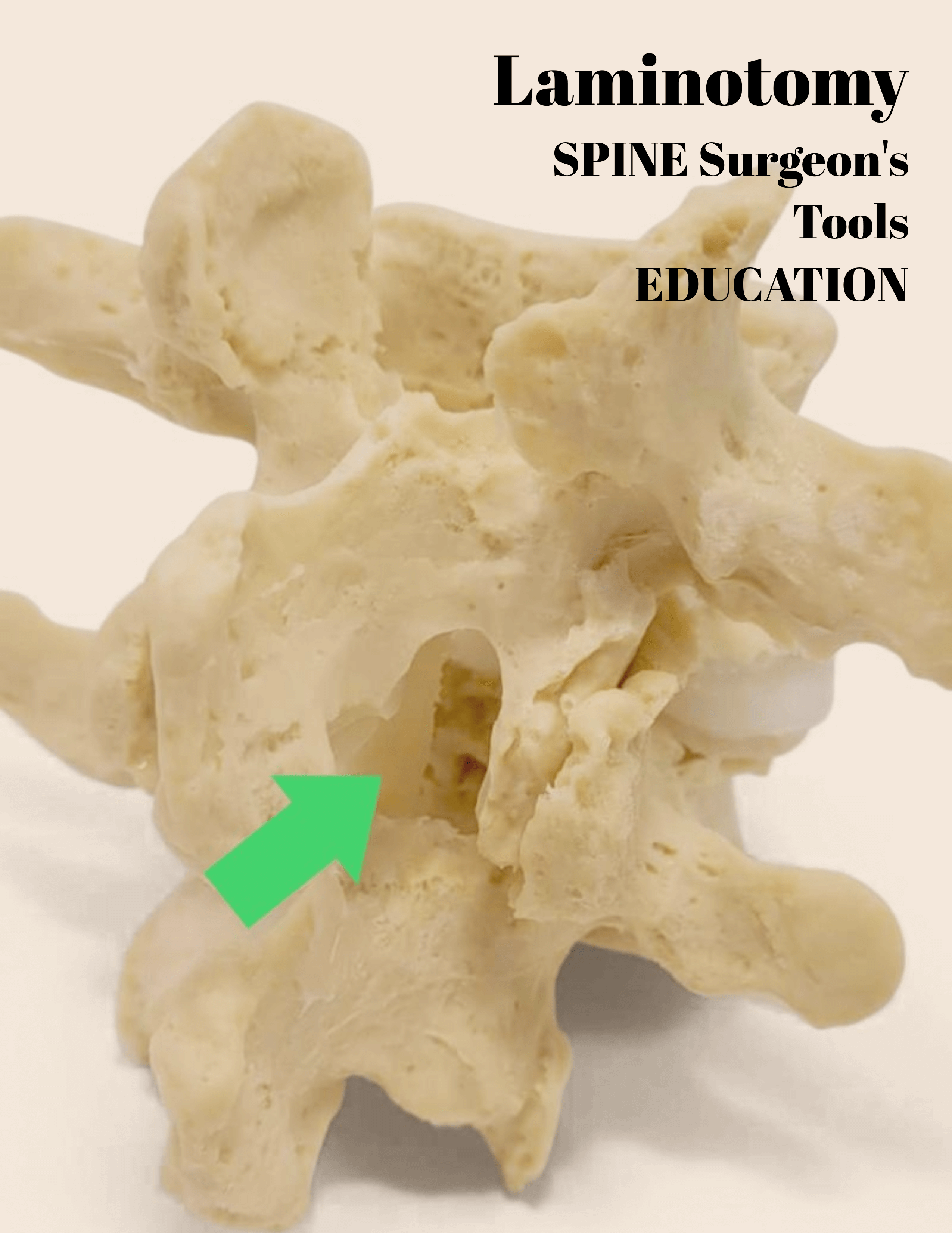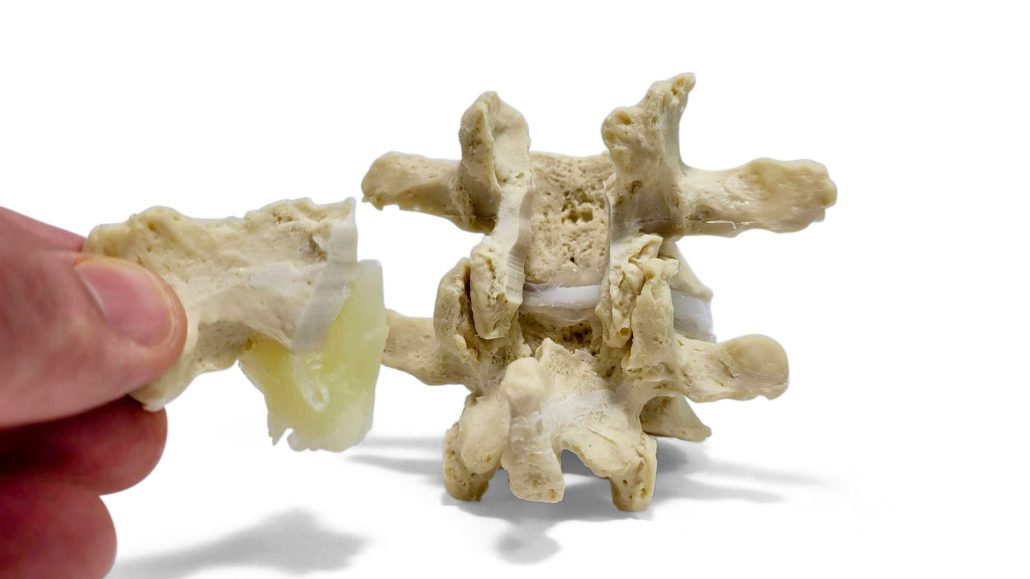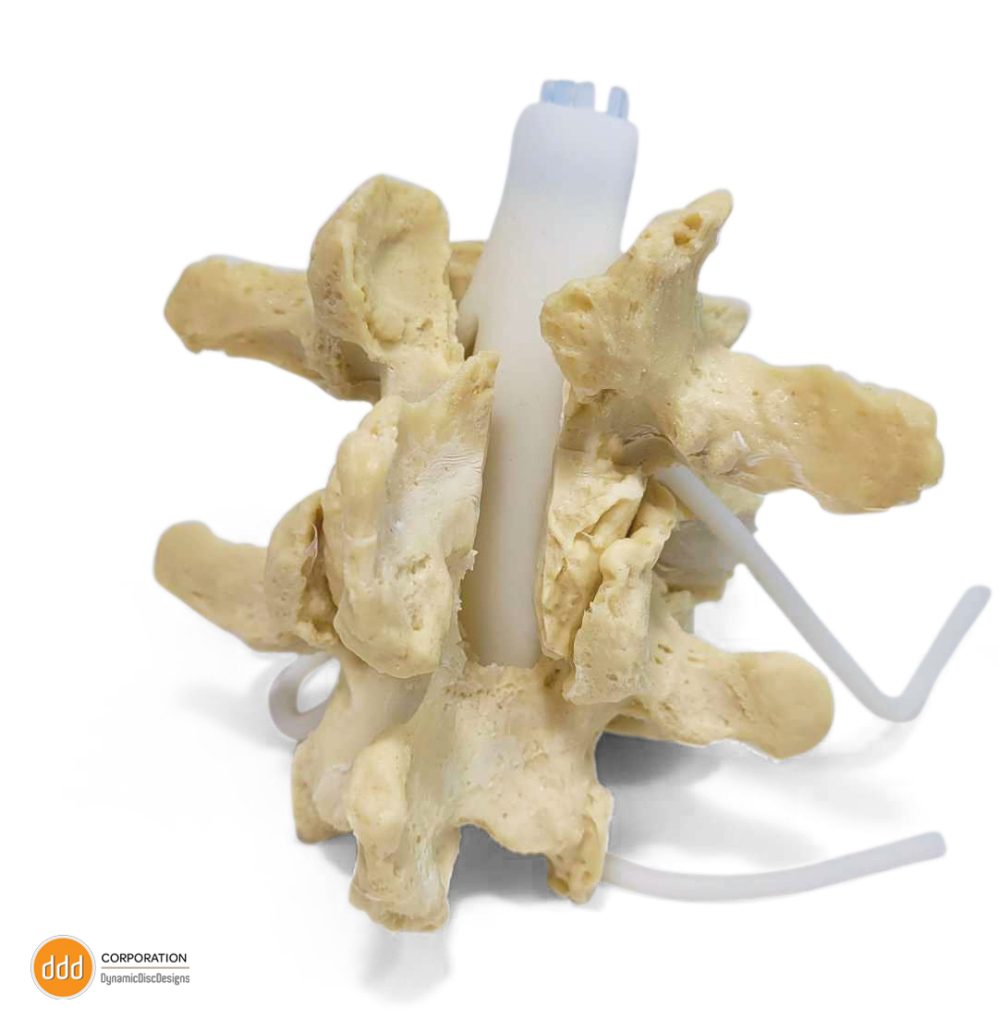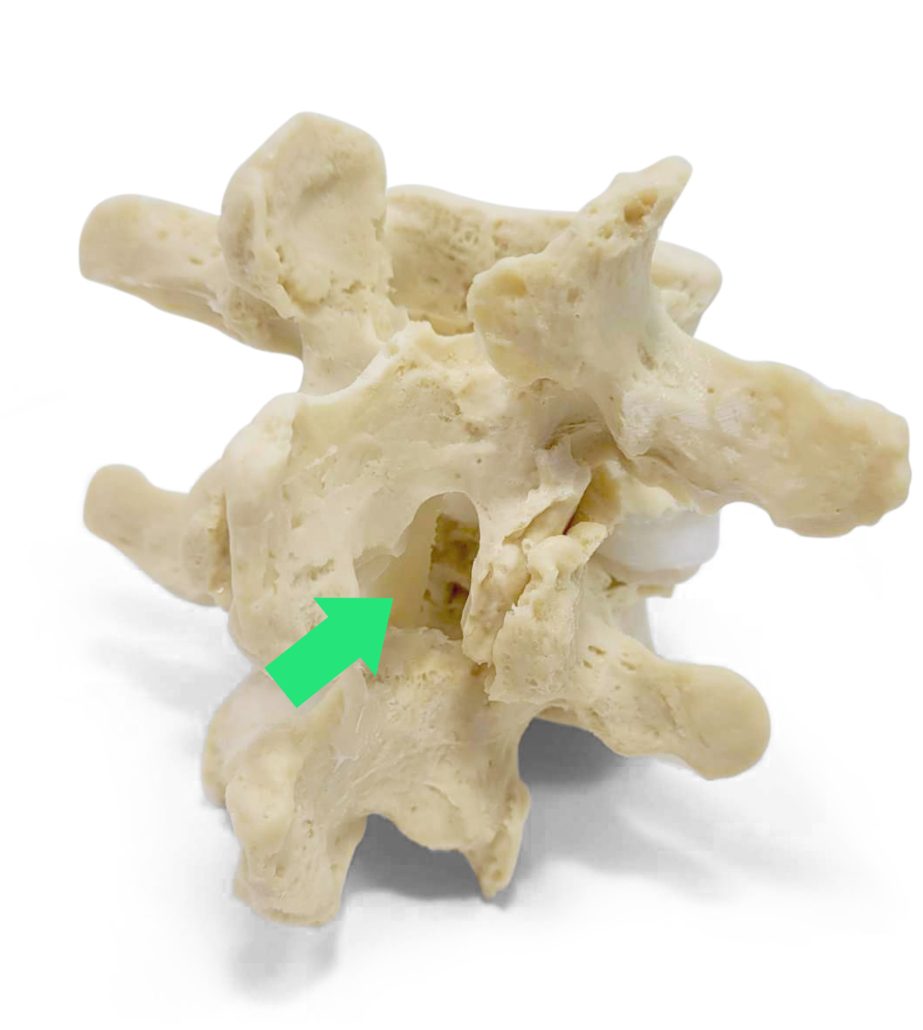
Appropriate patient education forms the basis for the success of better outcomes in spine surgery. Understanding patients’ diagnoses and surgical strategies is central to making them confident and active in the treatment plan. Dynamic Disc Designs developed innovative, dynamic models that help spine surgeons explain complex spine conditions and surgical procedures for them. Models produced included laminectomy, hemi-laminectomy, laminotomy, spondylolisthesis, and disc herniation. They are a fantastic way to support patient involvement and education—helping connect the symptomatic dots with the surgical treatment strategies within a dynamic anatomic framework.

It is established that an educated patient forms the crux of good health care. Informed patients adhere to pre- and post-surgery care instructions and, therefore, are more likely to have better outcomes. Spine doctors find it challenging to convey the intricacies of spinal anatomy and interventional spine surgery. This is where Dynamic Disc Designs’ models are useful. These 3D models are physical and, for patients, can be helpful in seeing the spinal structures or surgical processes in action, which helps them understand the intricacy of their diseases and the treatments they are receiving.
Dynamic Disc Designs manufactures high-detail, interactive anatomical models that emulate realistic movement and function in the human spine. These models are a dynamic depiction of how spine components interact in various settings rather than a static plastic or metal duplicate. They are helpful to spine surgeons in explaining surgical procedures in the best way possible, including laminectomy, hemi-laminectomy, laminotomy, spondylolisthesis, and disc herniation.
The surgical operation known as a laminectomy involves partially removing the lamina, which is a spinal bone. This is often done to relieve pressure on the spinal cord or nerves caused by spinal stenosis or herniated discs. Dynamic Disc Designs’ dynamic models show how lamina are removed and how this takes away pressure on the nerves that create symptoms. Such a visual aid would help the patients understand what the surgery is for and what the desired outcomes are.

A hemi-laminectomy is a modified laminectomy in such a way that one side of the lamina is removed. This way, more of the natural anatomy of the spine is preserved, although pressure on the nerves is still relieved during the procedure. These dynamic models of the spine can show the difference between a complete laminectomy and a hemi-laminectomy, therefore revealing why the spine surgeon requires a particular procedure.


Laminotomy treatment also incorporates the excision of a small part of the lamina, though only minimal parts are removed. This procedure is often used to access or remove any malformation in the spine, including herniated discs. Laminotomies allow a surgeon to create a window through which to work without removing a significant amount of bone from the spine, as shown by the dynamic models. This may allow one to appreciate how technically this surgery is done.
Spondylolisthesis is one such condition in which a vertebral body has slipped over the body below, creating severe pain and instability. Spondylolisthesis surgery is basically a component of spinal fusion, using hardware and bone transplants to support the afflicted vertebrae. Dynamic Disc Design models show how vertebrae can slip and the mechanisms put in place to stabilize them during surgery. This allows for a very practical explanation of the nature of the condition to the patient as well as the reason for the surgical intervention.

A disc herniation results from the soft, gel-like center of a spinal disc pushing through a tear in the outer layer, often causing pain and nerve irritation. Surgical options for disc herniation include a discectomy, which entails removing that portion of the disc. Dynamic models show how herniated discs compress nerves and how surgery can relieve this pressure. Patients are shown a physical depiction of their ailment, which aids in their comprehension of the necessity for surgery and how it alleviates their symptoms.

Patient and surgeon communication is critical to surgical success. The models from Dynamic Disc Designs offer a clear, visual explanation of complex conditions and procedures related to the spine. When patients see and touch the models, they quickly understand the diagnosis and what is being proposed as a surgical treatment. From this understanding, the foundation for confidence and trust in the surgeon is laid, which are critical components in reaching and maintaining patient compliance and satisfaction.
Because dynamic models have this benefit, they are used in spine surgeon consultations to answer and resolve surgical questions about the care patients receive. The patient can point to specific parts of the model and ask questions. Such an interactive approach ensures that patients understand their condition and the surgical plan, something known to mitigate anxiety and enhance general satisfaction with the healthcare they receive.
Informed decision-making is a cornerstone of patient-centered practice. Thus, patients who understand their diagnosis and treatment choices can make informed choices concerning their health. The models created by Dynamic Disc Designs provide information on spine disorders and operations in an easily understood manner, which strongly supports that.

This makes the patient better poised to have a significant discussion with their spine surgeon concerning the risks, benefits, and alternatives to the surgery they are about to undergo. This informed conversation helps patients feel in control of their health and confident in their decisions, thus realizing realistic expectations from the surgery results.
Appropriate preoperative and postoperative care must be provided for the patient. Patients who recognize the significance of these stages are more likely to adhere to them and pursue approved clinical results. Patients can be educated using a Dynamic Disc Designs model on what to anticipate before and after surgery, including lifestyle modifications, rehabilitation activities, and precautions.
All this goes a long way in enabling patients to understand why postoperative directions are so important! Using Dynamic Disc Models, patients can understand the importance of allowing the spine to heal effectively and promote rehabilitation through correct posture and movement. This combined visual and tactile learning experience amplifies the importance of following the care plan in the recovery process, thus leading to better recovery and a lower risk of complication.
Dynamic Disc Designs has revolutionized patient education among spine surgeons with its innovative, dynamic models. These models clearly represent complex spine conditions and surgical procedures, helping patients become more educated and engaged in their health.
As spine surgeons incorporate these dynamic models into their practice, patient education and effective communication with their patients regarding the details of their surgeries are simplified, leading to better surgical results. The interactive and informative nature of the consultation process with dynamic models makes the patients confident and satisfied that they will receive good care. So, the role played by these models cannot be overemphasized.
Share Now